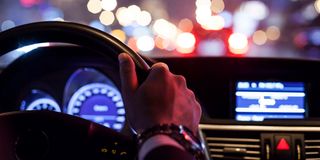Don't blame your car, it only does what you tell it to do...

Automatic cars have a number of “fail-safe” features at the ready-to-go moment.
I had a nasty experience about three weeks ago in Kayole.
From the parking, after buying some chicken feed, I started my car, engaged the gear lever to D position as usual and released the footbrake ready to go. The car decided to take control from me, and before I realised, it was in a ditch having caused substantial harm to the surrounding environment and almost injured a pedestrian! The police charged me with careless driving. My question is, when does a driver surrender control of steering wheel and brakes in an automatic car? Does it mean that we are fast approaching "autonomous car" environment with our automatics?
Daniel
A driver should never surrender control of a car. To describe any who do so as “careless” would be an understatement. That’s why the law has descriptors like “reckless” and “dangerous”, and phrases like “without due care and attention.”
Cars only do what they are told to do by the driver. Your car did not decide “autonomously” to race across a crowded car park and into a ditch. It was following an instruction to accelerate. Had you put your foot back on the brake, the car would have followed that instruction and stopped.
Automatics have a number of “fail-safe” features at the ready-to-go moment. First, the engine might not start at all unless the gear is in P (Park). It will not let you shift to D (Drive) unless your foot is on the brake and your left thumb is pressing the shift-release button. When that sequence is complete, on flat ground it should continue to stand still or only just “creep” into motion at idling revs. Only if you press the gas pedal will it accelerate.
If the car starts to move quickly the moment you release the brake, then your foot is already in the right place to take instant remedial action. The supposition in your incident is that the throttle was already wide open, either because the accelerator pedal was snagged by the floor mat or the throttle linkage under the bonnet had jammed partly open.
Even gear changes themselves in automatics are not autonomous. They are programmed to change at certain levels of engine revs and load, but those conditions are also chosen by the driver – by accelerating or driving up a steep hill, for example. If the driver makes no such change, the gears will not change.
***
Do you have a motoring question? Email [email protected]





